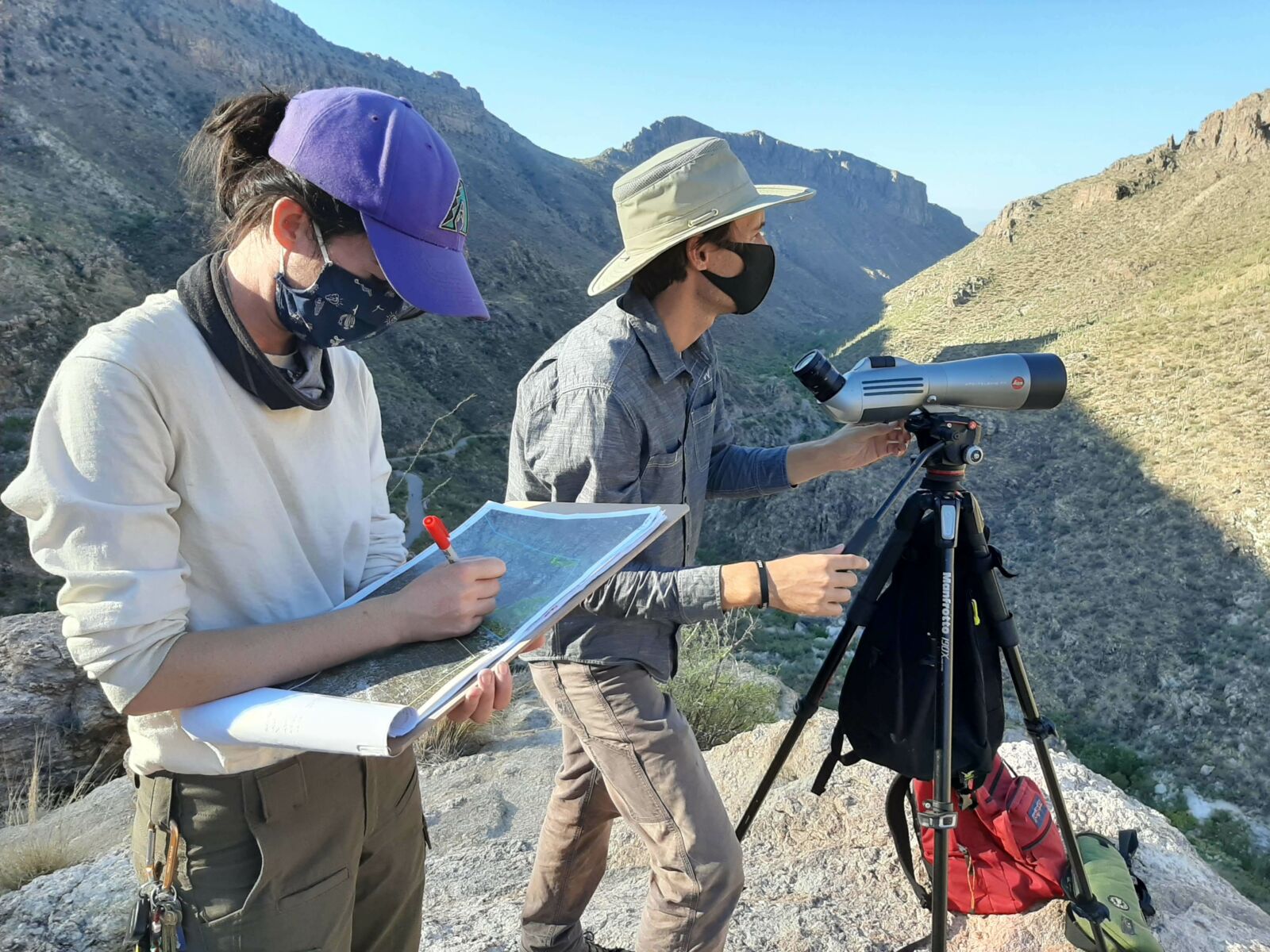The Coronado National Forest, National Forest Foundation (NFF), and Friends of Sabino Canyon (FOSC) are working together to conduct buffelgrass and other invasive species inventory and treatment in Sabino and Bear Canyons. This two-part project focuses on identifying the scale and threat of invasive species infestation across the Sabino Canyon Recreation Area and providing Forest managers the ability to pinpoint treatment areas. In sum, the effort aims to improve habitat and watershed conditions for communities, forest visitors, and wildlife through invasive plant management and fire risk reduction efforts.
“We are really excited for the partnership that has been formed with the Forest, NFF, and FOSC. Without this collaborative effort, we would not have had the opportunity to get as many acres surveyed, inventoried, and mapped for invasive weeds within the Sabino Canyon Recreation Area,” said Chrissy Pearson, Rangeland Management Specialist. “These surveys will help identify the infested areas for increased efficiency when treating for invasive weeds.”

Over the last several decades unnatural levels of fuels have accumulated across the Sonoran Desert ecoregion, growing more significant and contributing to increased fire risk and uncharacteristic fire behavior on the landscape. Survey, treatment, and restoration actions are imperative to maintain healthy forests and watersheds, to provide habitat for wildlife, and to protect enjoyment of the Sabino Canyon experience for thousands of hikers, bird watchers and visitors each year. The collaborative partnership between the Forest, NFF, and FOSC is catalyzing project work on the ground and leveraging funding needed to support management and restoration actions to address these concerns.
To date, NFF has contracted inventory and mapping of almost 2,000 acres in Sabino and Bear Canyons with Tucson Audubon’s CoATIS – Collaborative Audubon Treatment and Inventory Squad and the Arizona-Sonora Desert Museum, the results of which are expected to be completed early in 2021.
Project partners will then evaluate the inventory and mapping details and identify priority acres to treat within each canyon when conditions are suitable in the upcoming year.
“The partnership’s efforts address the very survival of the Sabino Canyon Recreation Area as we know and love it, consistent with the mission of Friends of Sabino Canyon to preserve, protect and enhance the area,” noted Conrad Grims, President of Friends of Sabino Canyon.
The Sabino Canyon Recreation Area is a picturesque landscape close to the Tucson community with breathtaking views, vibrant canyons, and lush riparian vegetation, and is home to a wide variety of birds and wildlife species. Each year more than one million visitors pass through Sabino Canyon to take advantage of hiking, biking, picnic, and wildlife-watching opportunities. Friends of Sabino Canyon is dedicated to supporting the Coronado National Forest in restoring this beloved and iconic area in the Santa Catalina Ranger District.
From a Forest-level perspective, Sabino Canyon is one of many important areas in the Santa Catalina Ranger District in need of inventory and treatment for buffelgrass and invasive species. The NFF will be working with the Coronado National Forest and other partners to support similar efforts around the Ventana, Finger Rock, and Pima Canyon areas, both inside and outside the Bighorn Fire burn scar, and across other priority restoration landscapes.
“The National Forest Foundation leverages partnership support to catalyze action and to implement restoration work across our National Forests” explained Rebecca Davidson, NFF’s Director of the Southwest Region. “This collaborative partnership supports a shared goal, allowing us to inventory and treat more acres than could have been done otherwise, fostering partnerships with other stakeholders in the region, and ultimately furthering our understanding of invasive species impacts across the Sabino Canyon Recreation Area and beyond.”
To learn more about how the National Forest Foundation takes action on the Coronado National Forest, and how you can get involved, please visit the Southern Arizona Forest Fund webpage.

